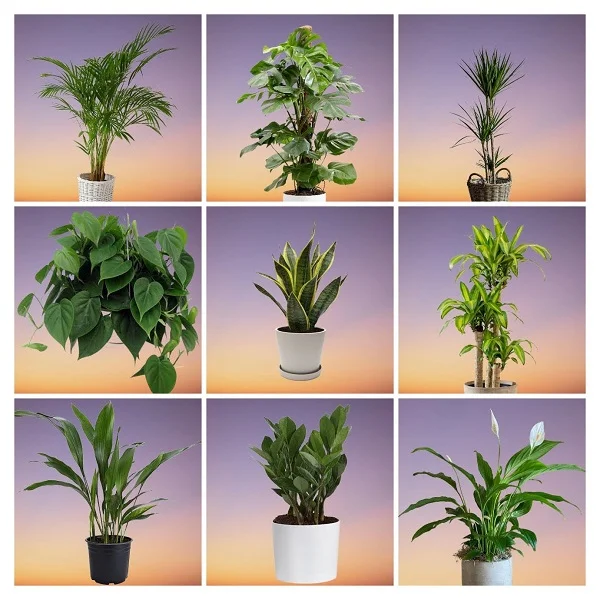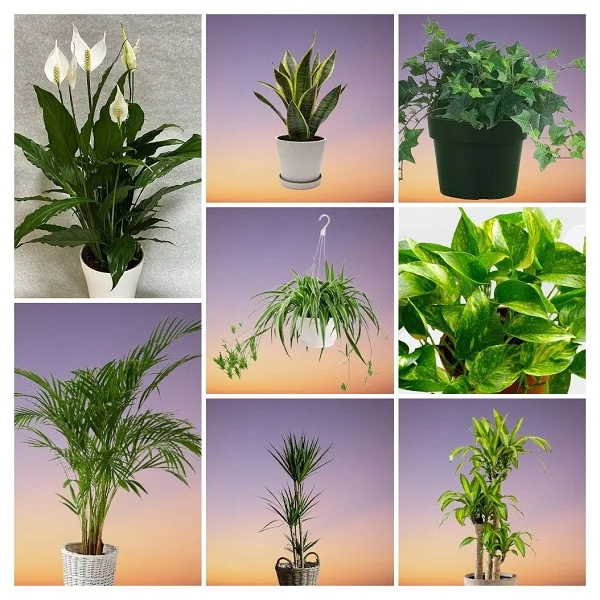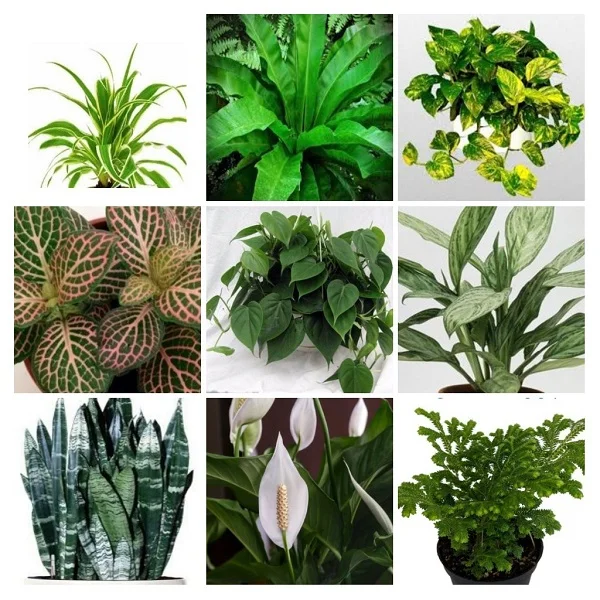20 Best Living Room Indoor Plants with Names and Care Guides
Some links in this post may be affiliate links
The living room is one great place to display your collection of indoor plants. The choice of living room plants is important so as to make it more cozy and inviting.
Apart from adding beauty to a space, some plants have been found to clean indoor air, freshen up spaces, reduce stress and improve general wellbeing. At the same time some plants have been shown to have toxic effects on humans and pets.
Therefore, selection of plants is key. As you choose plants for your living room, get those plants that will meet your intended purpose while considering the safety of the occupants.
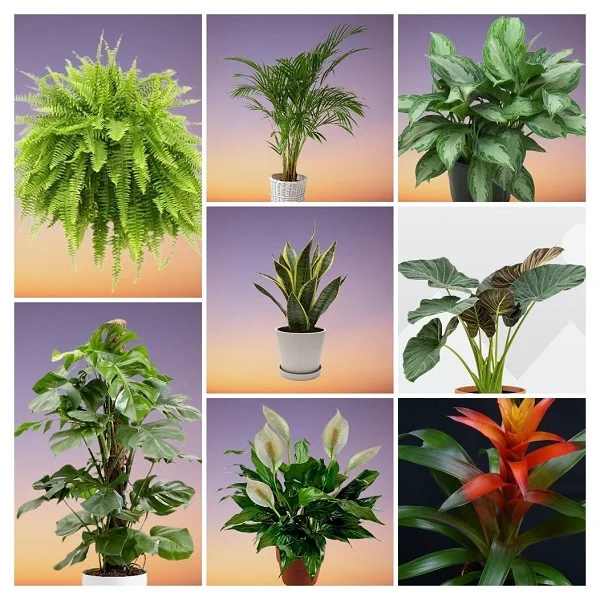
Remember also to consider the level of care and the growing conditions in your living room to ensure that they match those of the particular plant. Of importance is the amount of lighting and humidity in the room.
Where the lighting is not adequate for the particular plant, consider investing in grow lights to supplement it. To increase humidity especially in the winter months when the heating systems are running, instal a cool mist humidifier.
The plants can be placed on a shelf, a windowsill, a shelf, a tabletop, a pedestal or in a hanging basket. A floor standing plant is superb in a large livingroom.
We have herebelow outlined for you 20 best Living Room Indoor Plants with their Care Guides to make it easier for you to make your selection.
20 Best Indoor Plants for the Living Room
The best plants for the living room are Pothos, Peace Lily, Chinese Evergreen, Monstera, Anthuriums, Alocasias, Tradescantia, Peperomia among others. Keep reading to get the complete list.
1. Pothos (Scindapsus aureus)
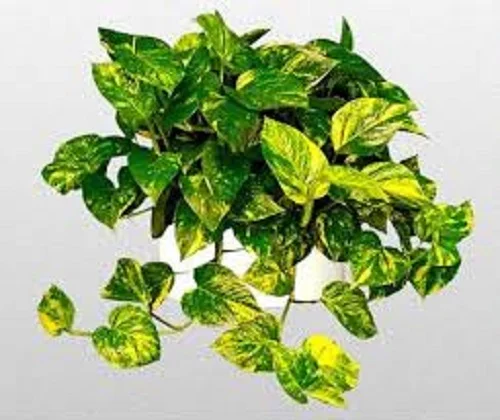
Pothos also called Devil's Ivy, Devil's Vine or Money Plant are popular plants that easily adapt to a wide range of growing conditions including a poorly-lit room.
Devil's Ivy can be grown in a hanging basket or as a specimen plant on a table or pedestal where the stems can hang down beautifully.
Money Plants grow best in medium to bright, indirect light away from direct sunlight, moderately warm and humid conditions and moderately moist, rich, well-drained soil.
Learn more on how to grow and care for Pothos (Scindapsus aureus)
2. Swiss Cheese Plant (Monstera deliciosa)
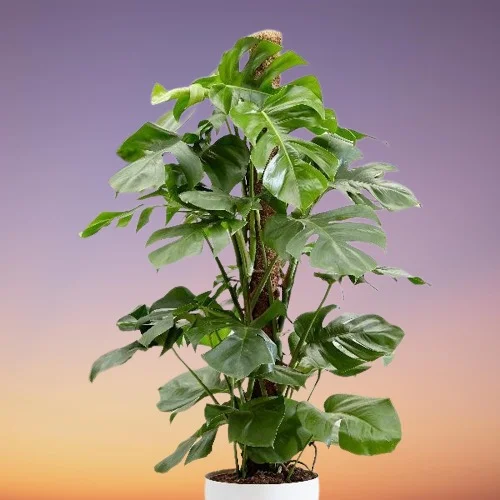
Swiss Cheese Plant is a fast-growing, climbing plant with large, heart-shaped, deeply perforated leaves which are a sight to behold and is easy to grow even for a beginner.
Monstera deliciosa is perfect as a stand alone plant for occupying large empty spaces. To produce an upright plant, provide a moss stick to support it and also push the aerial roots into the soil.
Swiss Cheese Plant thrives in bright to medium, indirect light away from direct sunlight, warm and humid conditions and moderately moist, fertile, well-drained soils.
Read more on how to grow and care for Swiss Cheese Plant (Monstera deliciosa)
3. Peace Lily (Spathiphyllum wallisii)
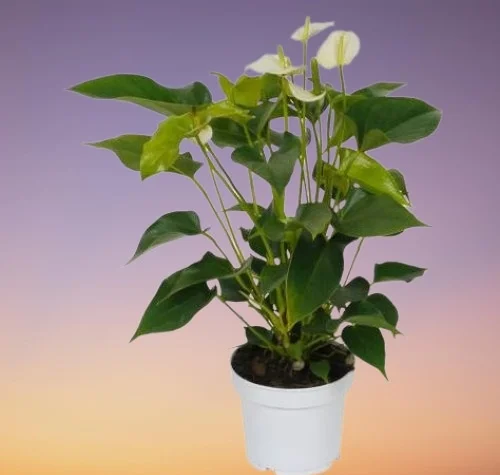
Peace Lily also called White Sails or Spathe Flower is a favorite, easy-care plant with dark-green glossy leaves and white blooms which will brighten any space.
Peace Lily is also a good indoor air cleaner which gets rid of rid of xylene, toulene, benzene, formaldehyde and ammonia from indoor air.
Spathiphyllum wallisii requires bright, indirect light away from direct sunlight, warm and humid conditions and moderately moist, well-drained, rich soil.
Learn how to grow and care for Peace Lily (Spathiphyllum wallisii)
4. Spider Plant (Chlorophytum comosum)
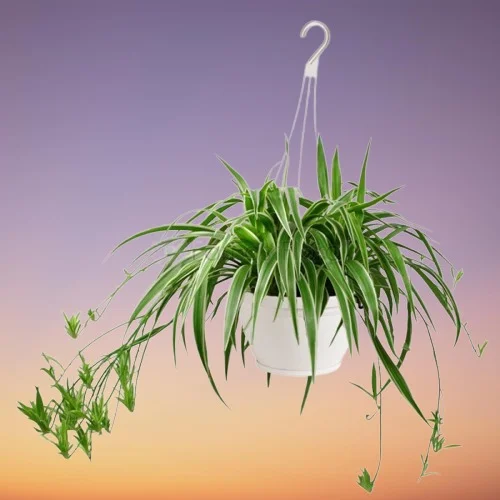
Spider Plant also called Airplane Plant, Spider Ivy or Ribbon Plant is a fast growing plant and is perfect for a hanging basket, a pedestal, a shelf or a tabletop.
Several varieties of Spider Plants are available with varying variegation form like 'Variegatum' with green leaves trimmed in white and 'Vittatum' with a central white stripe on green leaves.
Chlorophytum comosum thrives in bright, indirect light, average warmth and consistently moist, rich, well-drained soil coupled with regular feeding during the growing season.
Learn more on how to grow and care for Spider Plants (Chlorophytum comosum)
5. Stromanthe Triostar (Stromanthe sanguinea)
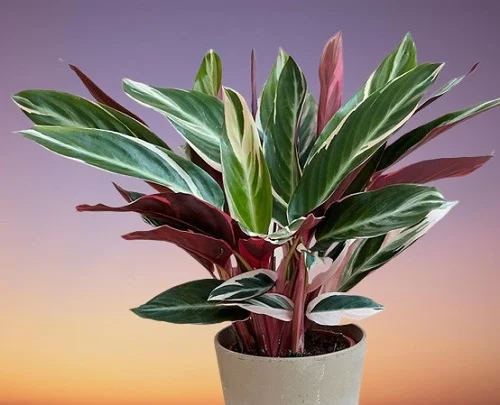
Stromanthe Triostar also called Tricolor Prayer Plant is one of the popular tropical foliage plants and is grown for its large, beautifully, patterned leaves that will add a splash of color in a living room.
Tricolor Prayer Plant is a slow-growing, herbaceous, perennial plant which grows to a height of about 6 feet and a diameter of about the same size.
Stromanthe sanguinea blossoms in bright indirect light (dappled light), average warmth of 16-260C, humidity of 60-80% and consistently moist, fertile, well-drained, all purpose potting soil coupled with monthly feeding during the growing season.
Learn more on how to grow and care for Stromanthe Triostar (Stromanthe sanguinea)
6. Anthurium villenaorum
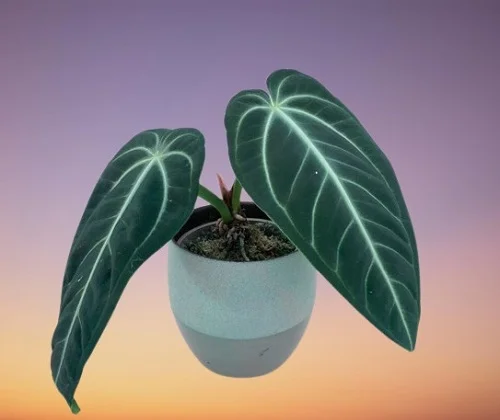
Anthurium villenaorum is one of the popular Anthurium varieties bearing teardrop-shaped, light to dark green leaves with prominent venation and is considered one of the easiest of the Velvet Leaf Anthuriums which can bloom upto five times a year.
The leaves in Anthurium villenaorum have a glossy and slightly corrugated texture which adds to its beauty. This makes it a sought-after plant and one of the best plants for the living room for a spectacular sight.
Anthurium villenaorum prospers in bright indirect light away from direct sunlight, average warmth of 16-270C, humidity of 60-70% and consistently moist, rich, well-drained, aroids soil coupled with monthly feeding during the growing season.
Learn more on how to grow and care for Anthurium villenaorum
7. Chinese Evergreens (Aglaonema)
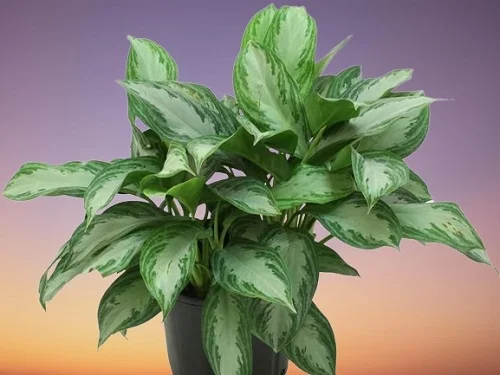
Aglaonema or Chinese Evergreens are popular plants on account of their spectacular foliage, ease of care, air cleaning properties and ability to adapt to indoor growing conditions.
Numerous varieties and hybrids of Chinese Evergreen are available. It is the green varieties Aglaonema modestum that can tolerate some shade but the near-white varieties need a well-lit environment.
Chinese Evergreens thrive in medium to bright light away from direct sunlight, warm and humid conditions and moderately moist, rich, well-drained soils.
Learn more on how to grow and care for Chinese Evergreens (Aglaonema)
8. Areca Palm (Dypsis lutescens)
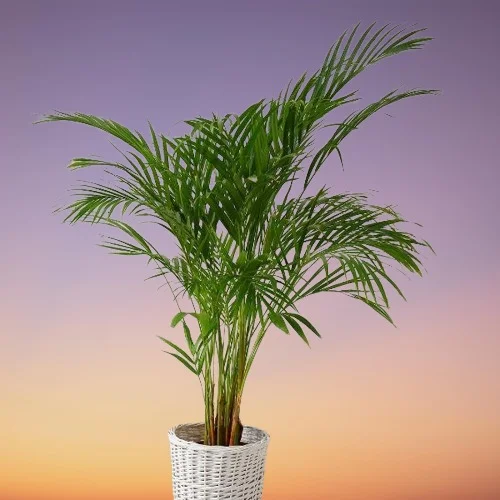
Areca Palm also called Butterfly Palm or Golden Cane Palm is a popular, easy to grow palm which adds an unmatched exotic feel in any space.
According to the NASA Clean Air Study, Dypsis lutescens was found to be a good indoor air cleaner which gets rid of formaldehyde, xylene and toulene.
Areca Palm requires bright, indirect light away from hot direct sunlight, average warmth and humidity and moderately moist, fertile, well-drained soil.
Read on how to grow grow and care for Areca Palm (Dypsis lutescens)
9. Mistletoe Fig (Ficus deltoidea)
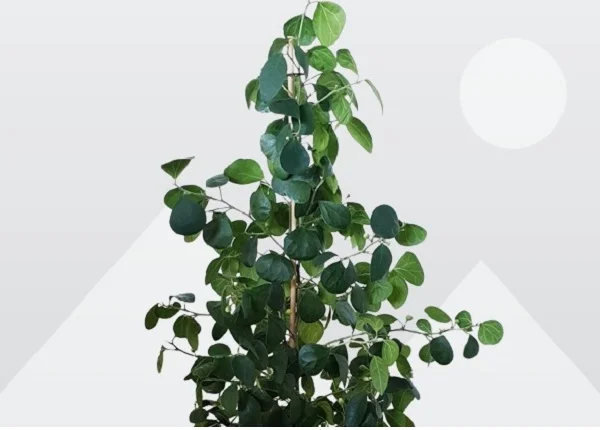
Ficus deltoidea commonly called Mistletoe Fig, Delta Fig or Fig Shrub is a slow-growing, evergreen, shrubby plant which bears glossy green leaves on top, golden yellow below with black spots and prominent veins.
The leaves in female plants are big and round while in male plants they are small, round and long. The species name, 'deltoidea', is in reference to the leaf shape which resemble the Greek letter, 'delta' which will look spectacular in a living room.
Mistletoe Fig prefers bright light with 4-6 hours of direct sunlight, average warmth of 15-260C, above average humidity of 60-75% and moderately moist, fertile, well-drained, all purpose potting mix coupled with monthly feeding during the growing season.
Learn more on how to grow and care for Mistletoe Fig (Ficus deltoidea)
10. Bird of Paradise Plant (Strelitzia reginae)
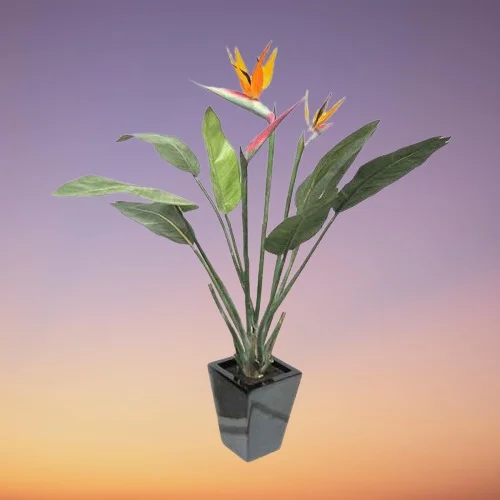
Bird of Paradise Plant or Crane Flower is a spectacular flowering plant with vivid bright orange and blue flowers borne on top of tall stalks and surrounded by large leaves which can last for several weeks.
Bird of Paradise Plant grows to a height of about 5-7 ft and 3-4 ft wide. The evergreen leaves are arranged in two ranks, making a fan-shaped crown.
Crane Flower grows best in bright light with some direct sunshine, cool to average warmth, humid conditions and consistently moist, fertile, well-drained soil.
Read more on how to grow and care for Bird of Paradise Plant (Strelitzia reginae)
11. Corn Plant (Dracaena fragrans)
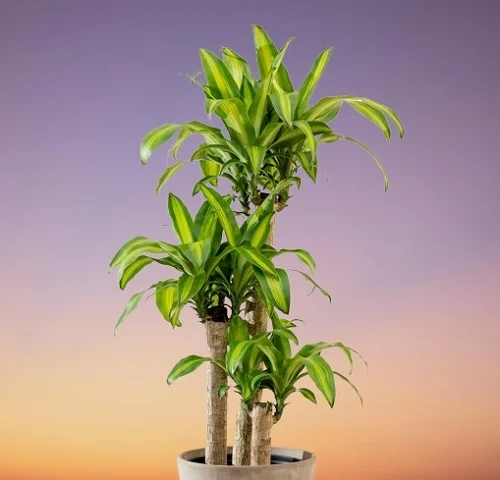
Corn Plant also called Corn Palm, Striped Dracaena or Compact Dracaena is an easy care plant whose glossy, large, yellow-striped leaves will brighten up any space.
Dracaena fragrans is also known as a good indoor air cleaner which gets rid of common VOCs like xylene, toulene, benzene, formaldehyde and trichloethylene from indoor air.
Striped Dracaena thrives in bright, indirect light away from direct sunlight, average warmth and consistently moist, rich, well-drained soil.
Learn how to grow and care for Corn Plant (Dracaena fragrans)
12. Spadeleaf Philodendron (Philodendron domesticum)
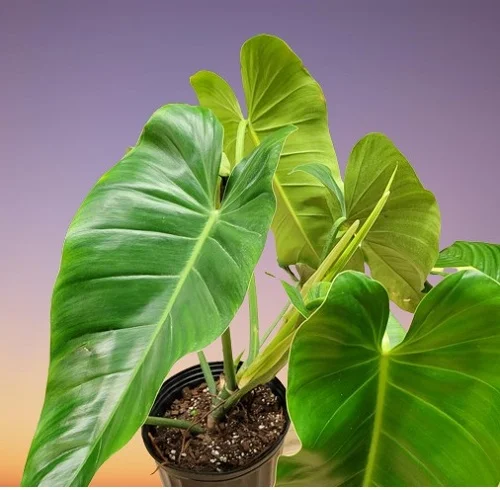
Philodendron domesticum commonly called Spadeleaf Philodendron or Burgundy Philodendron is among the evergreen, climbing Philodendron plants varieties which bears long, glossy, spade-shaped leaves and reddish-purple stems.
Spadeleaf Philodendron like Heartleaf Philodendron (Philodendron scandens), Finger-leaf Philodendron (Philodendron elegans), Silver Sword Philodendron (Philodendron hastatum) and Philodendron ilsemanii 'Variegata' can be grown as a climber on a trellis or a moss pole where it can beautifully display its beautiful foliage for a great first impression.
Philodendron domesticum grows best in bright indirect light, moderate warmth of 15-270C, humidity of 60-70% and moderately moist, fertile, well-drained, all purpose potting mix coupled with monthly feeding in the growing season.
Read on how to grow and care for Spadeleaf Philodendron (Philodendron domesticum)
13. Calathea zebrina (Zebra Calathea)
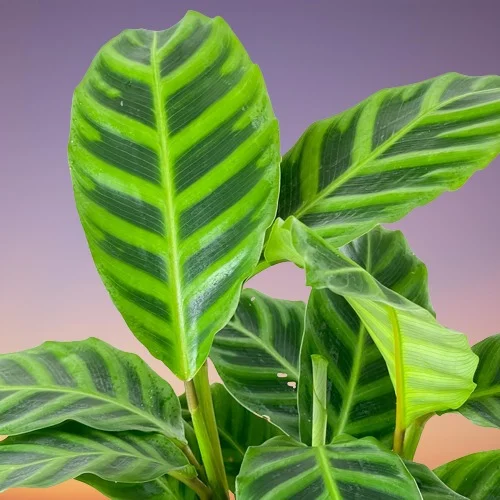
Zebra Calathea or Calathea Zebra Plant is one of the popular Calathea varieties with large ovate leaves which are dark-green above and reddish-purple below while the spines, veins and margins are a lime-green color.
Calathea zebrina is also known by the botanical name Goeppertia zebrina. The species name, 'zebrina', is in reference to the zebra-like stripes appearance of the leaves and make these plants like its cousins Rattlesnake Calathea (Calathea lancifolia), Calathea picturata (Goeppertia picturata) and Calathea Freddie (Calathea leopardina) perfect for the living room.
Calathea zebrina thrives in bright indirect light, average warmth of 15-260C, humidity of 50-60% and consistently moist, fertile, well-drained, all purpose potting soil coupled with monthly feeding during the growing season.
Read more on how to grow and care for Zebra Calathea (Calathea zebrina)
14. Green Velvet Alocasia (Alocasia micholitziana)
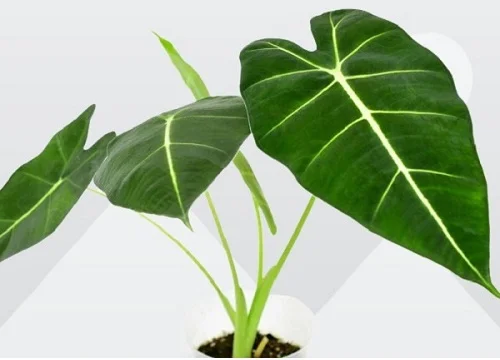
Green Velvet Alocasia is among the fast-growing plants bearing arrow-shaped, deep matte green leaves with a velvety texture on the upper surface and white veining, and pale-green undersides.
Green Velvet Alocasia like Alocasia 'Regal Shield' (Regal Shield Elephant Ear) and Alocasia longiloba are some of the popular Alocasia varieties which adapt to a wide range of growing conditions.
Alocasia micholitziana performs best in bright indirect light, average warmth of 18-250C, humidity of 60-70% and moderately moist, fertile, well-drained, aroids potting soils coupled with monthly feeding during the growing season.
Learn more on how to grow and care for Green Velvet Alocasia (Alocasia micholitziana)
15. Flaming Sword Bromeliads (Vriesea Bromeliads)
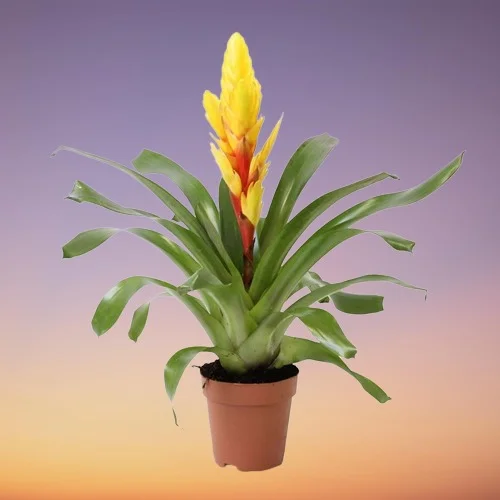
Flaming Sword Bromeliads are typical Bromeliad varieties with a central vase surrounded by a rosette of arching, smooth-edged leaves, about 1-1.5 feet long and an upright, sword-like flowerhead with bright red bracts.
Like Air Plants (Grey Tillandsia) which are grown for their striking foliage, some Vriesea Bromeliads including Vriesea hieroglyphica and Vriesea fenestralis are grown for their spectacular foliage and all make great plants for the living room.
Flaming Sword Bromeliads blossom in bright light, average warmth of 18-260C, humidity of 60-70% and moderately moist, fertile, well-drained, orchid's potting soil coupled with fortnightly feeding during the growing season.
Learn more on how to grow and care for Flaming Sword Bromeliads (Vriesea Bromeliads)
16. Polka Dot Begonia (Begonia maculata)
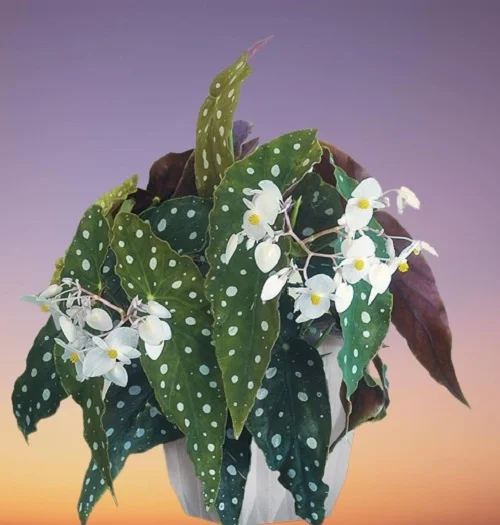
Polka Dot Begonia also called Trout Begonia or Spotted Begonia is among the popular Begonia plants and bears large, glossy, olive-green leaves blotched with white dot-like spots and hence the common name.
Spotted Begonia may be less spectacular in bloom than other Begonias but like Begonia coccinea (Angel Wing Begonia) and Begonia lucerna, it has the advantage of keeping its large, beautiful "Angel Wing" leaves through out the year.
Begonia maculata blossoms in bright, indirect light (filtered light), moderate warmth of 18-260C, average humidity of 50-55% and consistently moist, fertile, well-drained, all purpose soil coupled with weekly feeding during the growing season.
Read more on how to grow and care for Polka Dot Begonia (Begonia maculata)
17. Copperleaf Plant
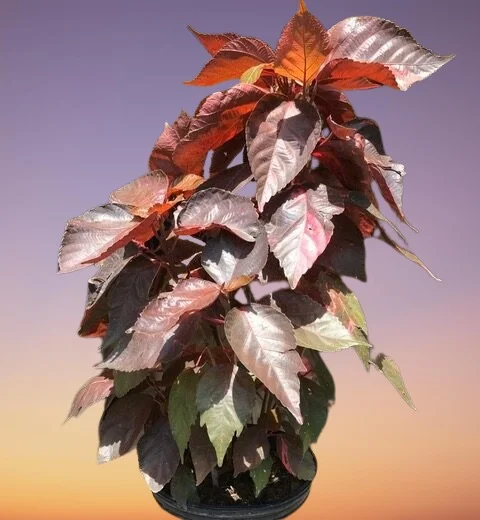
Acalypha wilkesiana also called Jacob's Coat or Fire Dragon is one of the popular, vibrant tree-like plants which exhibits attractive leaf colors making it a great accent plant in any space.
The broad, ovate to heart-shaped, serrated leaves can range from red, copper, bronze to pink, green and white, giving them a beautiful vibrant appearance.
Acalypha wilkesiana thrives in bright, indirect light away from direct sunlight (filtered light), moderate warmth of 18-270C, humidity of 55-70% and evenly moist, rich, well drained, all purpose potting soil coupled with fortnightly feeding in the growing season.
Learn how to grow and care for Copperleaf Plant (Acalypha wilkesiana)
18. Staghorn Fern (Platycerium bifurcatum)
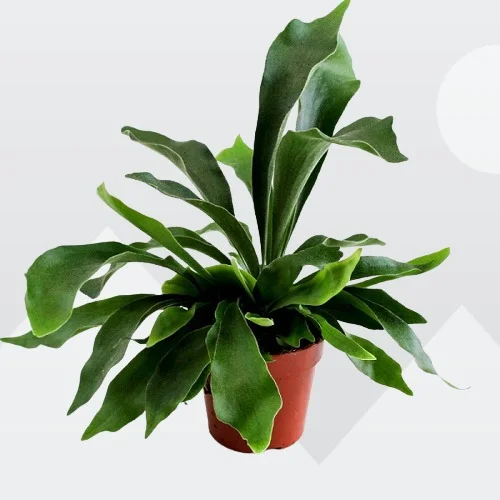
Staghorn Fern also called Antelope Ears Ferns or Elkhorn Ferns are some of the popular fern plants with large and spectacular fronds which are usually divided at their ends into antler-like lobes, hence the common names.
Elkhorn Fern which can grow to a height of 3 feet and 2.5 feet wide is fun to grow while mounted on a suitable surface or in a hanging basket. It is one of the best plants for the living room where it can be a great conversation starter.
Platycerium bifurcatum performs best in bright indirect light, average warmth of 16-240C, humidity of 50-60% and moderately moist, fertile, free-draining, orchids potting mix coupled with monthly feeding in the growing season.
Learn more on how to grow and care for Staghorn Fern (Platycerium bifurcatum)
19. Ruby Glow Peperomia (Peperomia graveolens)
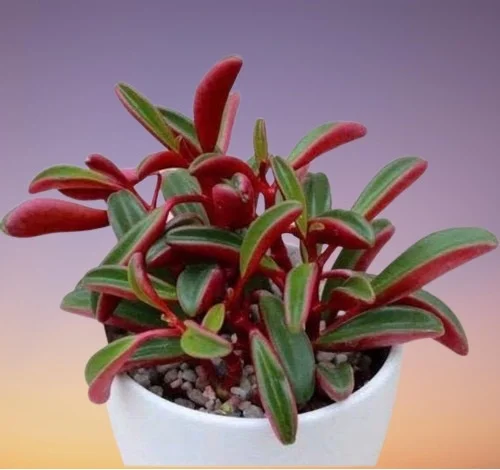
Ruby Glow Peperomia also called Ruby Peperomia is among the popular Peperomia varieties and bears gleaming red stems in wine-red color and succulent leaves with a wine-red shade. The upper part of the leaf has a transparent v-shaped ‘window’ which allows for photosynthesis to occur.
On account of their spectacular foliage, Ruby Peperomia and its cousins Peperomia clusiifolia (Peperomia Ginny), Peperomia argyreia (Watermelon Peperomia), Peperomia puteolata (Parallel Peperomia) and Peperomia polybotrya (Coin-leaf Peperomia) are some of the best plants for the living room where they will create a great first impression.
Peperomia graveolens flourishes in medium to bright indirect light away from direct sunlight, average warmth of 15-240C, humidity of 50-55% and moderately moist, fertile, well-drained, succulents potting soil coupled with monthly feeding during the growing season.
Learn how to grow and care for Ruby Glow Peperomia (Peperomia graveolens)
20. Tradescantia Nanouk (Tradescantia albiflora 'Nanouk')
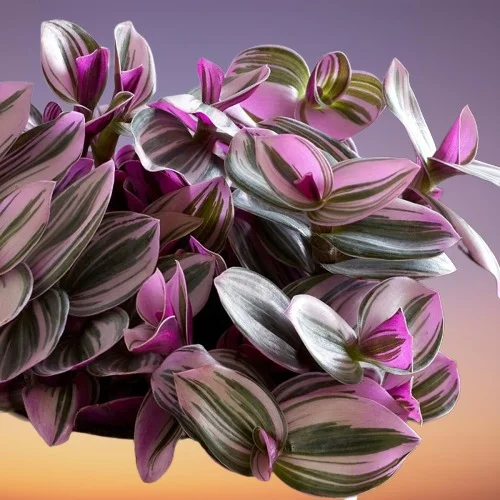
Tradescantia Nanouk also called Fantasy Venice Plant or Spiderwort 'Nanouk' is a spectacular plant on account of its bright green, pink & purple, fuzzy leaves growing on sturdy stems.
Fantasy Venice Plant is a cross between two selected seedlings of Tradescantia albiflora. It is a patented plant which was developed to create a new hardy and vigorous Tradescantia plant.
Tradescantia Nanouk grows best in bright, indirect light away from direct sunlight, average warmth and consistently moist, rich, well-drained soil.
Learn how to grow and care for Tradescantia Nanouk (Tradescantia albiflora 'Nanouk')
